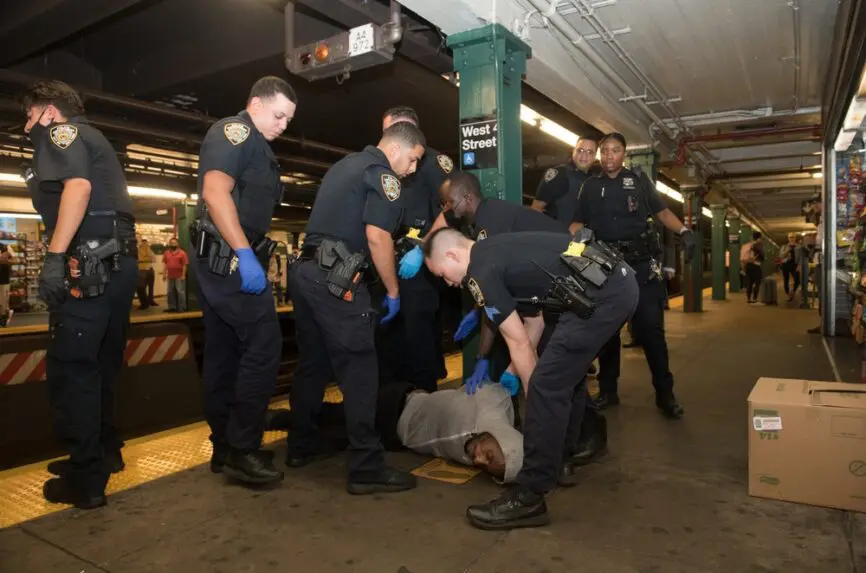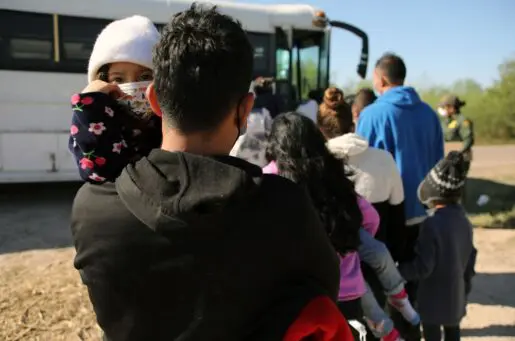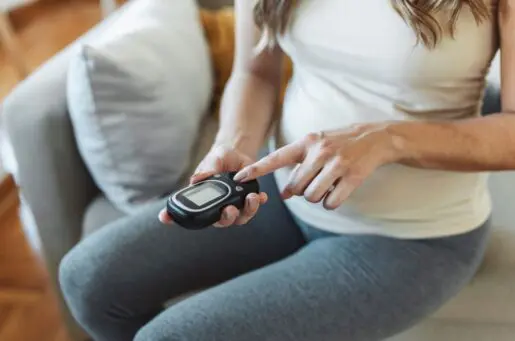Bioethics Forum Essay
New York City’s Involuntary Commitment Plan: Fulfilling a Moral Obligation?
After a string of violent crimes involving mentally ill people who are homeless, New York City Mayor Eric Adams announced a plan last November for police and emergency medical workers to involuntarily remove people with severe mental illness from the streets and subways and bring them to hospitals for psychiatric evaluation. The announcement followed other recent policies addressing homelessness in the city and similar involuntary commitment plans in the state of California and in Portland, Ore. While involuntary commitment of some mentally ill people has been legal in the United States for decades, Mayor Adams’s plan increases use of the practice and calls for additional training of police and emergency responders to determine when it is necessary.
In his announcement, Mayor Adams argued that we have a “moral obligation” to help people who are mentally ill. But appealing to ethics begs the questions: Does this plan qualify as helping mentally ill people? And is it moral?
Bioethicists have been discussing the ethics of involuntary commitment for decades. Willard Gaylin, psychiatrist and cofounder of The Hastings Center, and Bruce Jennings, a Hastings Center senior advisor and fellow, examined this issue in their 1996 book, The Perversion of Autonomy: The Proper Uses of Coercion and Constraints in a Liberal Society. The book opens with a story of an unhoused mentally ill man who died on the street across from a hospital in New York City after refusing medical care from an emergency medical team. Gaylin, who died last month, and Jennings appeal to values, stating that it is morally dangerous to place too much value on individual autonomy and too little on care and support for people in need.
Paul Appelbaum and Thomas Gutheil, who are psychiatrists and bioethicists, made another argument in support of involuntary commitment, focusing on the human right to health care. While many argue that hospitalized psychiatric patients have the right to refuse medication, Appelbaum and Gutheil stated that they also have “the right to the best possible treatment for his psychiatric disorder (even if, as a result of that disorder, the citizen is inclined to refuse.)” Thus, if all individuals have a right to health care, Mayor Adams is correct in calling the involuntary hospitalization of severely mentally ill individuals a moral obligation.
However, while involuntary commitment may be both necessary and morally sound to provide people the health care they deserve, moral questions remain about Mayor Adams’s new plan.
First of all, the plan aims to move severely mentally ill people into psychiatric institutions, which currently lack the space and capacity to properly treat them. As Appelbaum and Gutheil pointed out, people have a right to the best possible treatment. However, such treatment is not possible with the current state of psychiatric care in New York. According to a 2018 report by the Manhattan Institute, nonforensic state psychiatric centers in New York City lost about 15% of their total adult bed capacity from 2014 to 2018. During roughly the same period, from 2015 to 2017, the number of seriously mentally ill homeless New Yorkers increased by 22%, and every year from 2014 to 2018, there was a rise in the number of “emotionally disturbed person” calls responded to by the New York City Police Department.
The lack of capacity of psychiatric institutions is not a new problem. As a result of deinstitutionalization, a national movement beginning in the 1950s that moved psychiatric patients out of state institutions and into communities, many mental health care facilities closed. The significant reduction of beds for psychiatric patients means that many people with severe mental illness who need residential treatment cannot receive it. This problem is reflected in decreasing lengths of stay for patients in New York State psychiatric hospitals.
The consequences of involuntarily committing people before addressing the shortages within psychiatric centers will be significant. Mentally ill and homeless people currently cycle through the criminal justice system–-people who are homeless are more likely to wind up in jail, and formerly incarcerated people are 13 times more likely to experience homelessness than the general population. Additionally, it is estimated that 44% of people incarcerated in jail and 37% of people incarcerated in prison have a mental health condition. With New York City’s new plan, it is not difficult to imagine an outcome in which mentally ill homeless people also cycle in and out of psychiatric institutions.
Furthermore, giving the police a bigger role in involuntary commitment could increase the risk of these negative outcomes. Critics argue that Mayor Adams’s policies addressing homelessness, including clearing homeless encampments and increasing police presence in subways, rely far too heavily on the police. Reliance on the police for these issues is not new–-across the country and in New York City, police have long played a central role in governing the lives of homeless and mentally ill individuals-–but it is harmful for many reasons. It contributes to a long history of overpolicing of marginalized communities.
People with severe mental illness and people of color, primarily Black and Hispanic people, are significantly over-represented in the New York City homeless population. Discriminatory policing dates back to the beginning of policing in America, which has roots in slavery. Black and Hispanic Americans are killed at disproportionate rates by the police compared to white Americans, and people with untreated mental illness are 16 times more likely to be killed by law enforcement than those without mental illness.
A pattern of criminalizing homeless and mentally ill people in New York City is similarly concerning. In 1982, a transit police squad known as the Homeless Outreach Unit was formed to move homeless people out of subways and into shelters or social service programs. By 2010, the mission of this unit had shifted; officers arrested more than 2,000 people for petty violations, such as putting their feet up on a subway seat. By relying on police to determine whether an individual should be involuntarily hospitalized, Mayor Adams’s plan perpetuates a longstanding history of increased violence and criminalization towards homeless and mentally ill New Yorkers.
Additionally, the policing of homeless and mentally ill people contributes to a long history of policies that prioritize values of exclusion and intolerance, rather than rehabilitation and reintegration. In their paper on psychiatric patients’ right to refuse medication, Appelbaum and Gutheil wrote that continuing to treat these patients is in the interest of reintegration, which is in the interest of “citizenry at large.” While this may have been a value prioritized by citizens in the past, researchers point to a shift in the aims and values driving 21st century policy, “in which any previously-existing impulses to rehabilitate and reintegrate homeless people have been supplanted by the more aggressive and intolerant aims of exclusion and incapacitation.”
One policy that represents this shift is the 1994 zero-tolerance policing directive, Police Strategy No. 5: Reclaiming the Public Spaces of New York City, by New York City Mayor Rudolph Guiliani and Police Commissioner William Bratton. As seen through the Homeless Outreach Unit, policies like this one often are created with the purpose of preventing violence and increasing public safety, but instead turn into a “thinly-veiled attack on homeless people.” By instructing officers to engage in the removal of mentally ill and homeless persons from public spaces, these policies imply that the homeless and mentally ill do not belong in public spaces that are meant to be for everyone. Part of a larger debate about what “public space” really means, scholars often argue that policing public spaces leads to the exclusion, not the reintegration, of homeless and mentally ill people from society.
The ultimate solution to support the health of mentally ill homeless individuals is affordable housing. Housing instability has severe consequences for mental and physical health, while housing the homeless consistently improves psychological distress and physical health. The Housing First model, “in which chronically homeless people with a diagnosis of a behavioral health condition receive supportive housing,” has widespread positive impacts. A 2018 study found that participants who got stable housing through this model had a decrease in the use of inpatient psychiatric hospitals and an increase in the use of food banks. They also spent less time in prison than participants who remained unstably housed. To stop the cycle of homeless mentally ill people going in and out of jails and hospitals, affordable housing must be the number one priority.
In the meantime, the probable harmful consequences of Mayor Adams’s plan should be addressed in other ways. More funding must go toward psychiatric services to support the long-term care needs of severely mentally ill patients. An important step forward is New York Governor Kathy Hochul’s announcement today about a $1 billion plan to address gaps in care for people with severe mental illness, including adding 1,000 beds for inpatient psychiatric treatment and 3,500 housing units. State psychiatric centers are not equipped to do much more than give patients medications and release them from the hospital. In addition, involuntary hospitalization decisions should be made by social workers and mental health care professionals, not by police. By limiting the interactions between police and severely mentally ill people, we may be able to decrease the violence and criminalization that these individuals face and truly fulfill the moral obligation to provide compassionate and effective care.
Aashna Lal is a senior project manager and research assistant at The Hastings Center.














A different state, Montana, is proposing to STOP more involuntary commitments – https://khn.org/news/article/ending-involuntary-commitments-would-shift-burden-of-dementia-care-to-strapped-communities/?utm_campaign=KHN%20-%20Weekly%20Edition&utm_medium=email&_hsmi=241610074&_hsenc=p2ANqtz–0Fy6CFBm7cGX1YIfvitU5xFzwpFsEQYHTv0v4ogVpU0OOaYWF9AFah7_7UN24eTq9M8rHOagcRmDNpNys-Tj2vUn42uYcPE2aZyP0NPPX4SNdfGU&utm_content=241610074&utm_source=hs_email – because they want institutionalized patients to transition to better care in communities. Reflecting concerns about ‘Housing First’ Montana nursing home providers believe that they would be better residential placement for many who are now involuntarily committed but only if daily Medicaid reimbursement rates are raised.
New data on ‘Housing First’ planning and spending:
“Utah’s experience almost twenty years out from program adoption casts doubt on the idea that the Housing First philosophy will deliver on its promises. Although Housing First was once hailed as a solution to homelessness, Utah’s experience suggests that there still are not easy answers. In fact, the state is continuing to experiment with ways to get the homeless off of the streets, including modifying the Housing First approach to looking at ways to move homeless out of tents and into semi‐permanent tiny houses. The outcomes in California, another Housing First state, also look bleak.
Given the results so far, it would be prudent for the Biden administration to allow local governments to continue experimenting with strategies to reduce homelessness, rather than pushing Housing First initiatives nationwide. A more cautious approach ensures that states and municipalities avoid costly pitfalls and put resources towards successful initiatives rather than faltering ones.”
https://www.cato.org/blog/evidence-calls-housing-first-homelessness-strategy-question?utm_campaign=Cato%20Today&utm_medium=email&_hsmi=242546745&_hsenc=p2ANqtz-8iRqGAEVDHNG0GNayalxBO09ZE_bfBzA2_J2NGFk7f9ADBGLqvg8KqnLDyrt8cm1Mk_KUviCrhK2Dq-4x01X075aVF4trXbwGE97XdFZe6b1vY3YY&utm_content=242546745&utm_source=hs_email
As a New York resident, homelessness is a phenomenon I see every day. And as a medical student, it is unlikely that I would be able to accurately identify when a homeless individual is mentally ill just from a few moments of assessing their behaviour. Mayor Adams’ involuntary commitment plan is a clear violation of basic autonomy; a person who is potentially mentally ill is still a person – they do not lose their rights to make decisions regarding their own health and body just because they are homeless. Just because involuntary commitment has been legal in the US for decades does not mean it is correct.
One of the biggest issues the author identifies with the new involuntary commitment plan is its overreliance on the police. Although it is undoubtedly beneficial for police officers and first responders to receive extra training, are they really the best people to identify, approach and commit the mentally ill? In his announcement, Mayor Adams – a former police officer himself – also mentioned that first responders can now commit any individual they believe cannot meet “basic human needs”. Under the new law, citizens may suffer unlawful detention and involuntary hospitalisation just by exhibiting behaviour that a police officer perceives to be abnormal, regardless of whether they are mentally ill. This not only strips them of their autonomy, it would also harm wrongfully committed individuals.
Proponents of the involuntary commitment plan may have a ‘better safe than sorry’ argument – it is more beneficial to commit those suspected of violence and not having access to basic necessities than to continue allowing them to live on the streets and in subway stations, where they may pose a danger to themselves and others. I understand that this can be seen as helping the homeless who do not otherwise have access to care. However, individuals should be provided the option and access to mental healthcare; they should not be coerced or forced to receive treatment.
If one is unable to meet basic needs such as access to food, healthcare and shelter, what they need is not to be admitted into a psychiatric hospital for up to a few days against their will. The real solution should target the root of the problem – governments and organisations should work towards making mental healthcare more accessible for all and improving the provision of social support services. Just as any New York citizen is able to walk into urgent care centres and receive care for a sprained ankle or the flu, infrastructure should be put in place such that all individuals have easy access to treatment for mental illnesses.
Having worked extensively in the field of mental health as a psychiatric nurse, I have witnessed firsthand the complexities faced by individuals with severe mental health concerns. The increasing involvement of police in mental health interventions is a pressing issue not only in New York City but also here in Canada. This trend raises significant concerns about the safety and well-being of a marginalized population that is already vulnerable. Mayor Eric Adams’ proposal to involuntarily remove mentally ill individuals from public spaces raises the question of society’s moral obligation and stresses the urgent need for better laws and policies to protect and support severely mentally ill individuals, rather than criminalize or marginalize them further.
While the plan is presented as fulfilling a “moral obligation” to help those who are mentally ill, it raises ethical questions about the methods employed. Involuntary commitment—especially when initiated by non-clinicians like police officers—compromises the rights of vulnerable individuals and may ultimately do more harm than good. The involvement of law enforcement in such sensitive situations often leads to outcomes that are not in the best interest of those who need compassionate care and professional medical assistance.
A central issue with the plan is that police officers who lack specialized training to accurately assess mental health conditions, are the ones tasked with making critical decisions. Involuntary commitment strips individuals of their rights to make informed decisions about their own lives, which is a violation of human autonomy. This is particularly concerning when such actions disregard personal agency and can lead to misdiagnoses or inappropriate interventions that do not improve, or may even worsen, the individual’s quality of life.
The potential for violent or forceful apprehension during the involuntary commitment process poses significant risks of psychological and physical harm. Increasing police involvement in mental health crises heightens the likelihood of such harmful encounters. It is crucial that the interventions conducted are done by professionals trained to handle mental health emergencies safely.
From the perspective of beneficence, which calls for actions that promote the well being of others, the plan is questionable. Allowing individuals who have “additional training,” which would amount to a very basic understanding of mental health concerns, to determine mental health status does not serve in the best interests of the individuals involved. The risk of misjudgment is high, and the potential benefits are undermined by the possibility of causing unnecessary distress or harm. In Winnipeg, for instance, we have seen positive results from dispatching trained mental health professionals alongside police officers during mental health-related calls. This approach ensures that individuals receive appropriate assessment and care, aligning actions with their best interests.
Although the intention behind Mayor Eric Adams’ plan is to enhance public safety and address the needs of mentally ill individuals, it minimizes the importance of specialized clinical intervention and the complexities of mental health care. Mental health crises require refined understanding and expertise that go beyond what police officers are trained to provide even if this includes “additional training” which I agree they should receive. Addressing public safety concerns should not come at the expense of the rights and well-being of those who are most vulnerable.
To move toward a more ethical and effective solution, I believe integrating mental health professionals into the response system is essential. Implementing a model where trained clinicians such as social workers, occupational therapists, or psychiatric nurses, accompany officers during mental health calls has proven successful here in Winnipeg. This collaboration has helped ensure that individuals receive appropriate care and reduce the likelihood of unnecessary involuntary admissions. It also may improve interactions between law enforcement and marginalized populations, aligning with ethical principles by promoting beneficence and minimizing harm.
Another critical solution discussed within the essay, involves addressing the systemic issues contributing to the mental health crisis. Increasing funding for psychiatric services and investing in affordable housing are fundamental steps toward providing long-term support to those in need. Governor Kathy Hochul’s announcement of a $1 billion plan to enhance mental health care and housing in New York is a positive development that prioritizes justice by aiming for equitable access to care.
While the intent behind Mayor Eric Adams’ involuntary commitment plan may be to fulfill a moral obligation, it raises significant concerns when examined through the lens of law and bioethics. By adopting strategies that integrate mental health professionals into response teams and investing in systemic solutions like improved psychiatric care and supportive housing, we can better ensure the safety of this marginalized population.